10 lead generation ideas for 2025

Senior Content Marketing Manager at Oktopost

Tags
Share
If you want to grow your business, you need a strong inbound and outbound lead generation workflow that brings new buyers to your brand. The more leads you generate, the more people will go through the sales cycle and end up becoming loyal customers.
With technology and audience preferences changing every year, you can’t afford to keep using the same old lead generation strategies. In this article, we’ll take a look at 10 powerful lead generation tactics that will help you produce even better results in 2025.
1. Use social media to its full potential
Many businesses think of social media as being only part of branding efforts, dismissing the lead generation potential these channels offer their sales teams.
However, social media marketing should be a central part of your lead generation strategy, if not your marketing strategy as a whole. If you’ve done your job correctly, your followers are your ideal target audience that are looking for updates about your products and brand.
For example, when it comes to B2B lead generation, LinkedIn is unparalleled. Your potential leads are already on the network for work purposes, and are much more receptive to outreach from your sales team or engage with social selling efforts.
Social selling on LinkedIn is going to be a lot more welcomed than your typical cold calling efforts. In fact, we found that advocacy posts from LinkedIn had a much higher conversion rate than both Facebook and Twitter combined.
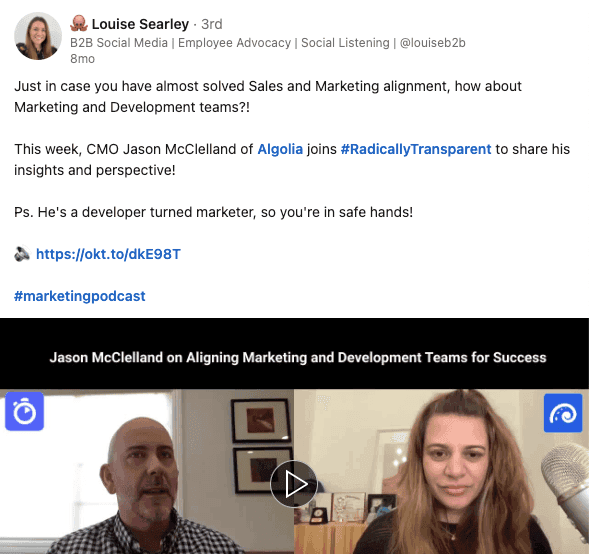
Social channels are also a great way to promote your incredible content. Whether you’re sharing out single infographic blocks, promoting lead magnets like whitepapers or webinars, or distributing a downloadable template that adds value to your customer, social media is a fantastic way to get the word out.
Not to mention, it’s also a great vector for customer reviews or earning social proof for your brand. When there are many happy customers singing your praises on social networks, it’s a lot easier to convince new prospective leads to join them. If you're exploring tools to optimize these efforts, considering Sprout Social alternatives can provide tailored solutions that better fit your specific needs or budget.
2. Create exit-intent popups
Businesses are understandably hesitant to integrate popups into their lead generation campaigns. Popups can come off as intrusive and distracting, pulling users away from your website and breaking up their experience.
While it’s certainly true in some situations, that doesn’t mean that you need to avoid them entirely. In fact, popups can be one of the most effective lead generation tools when used in ways that align with how visitors use the site.
Exit-intent popups only show up when a visitor is about to leave your website. In most cases, this means that they moved the cursor away from your site in order to close the tab or window. This is your last chance to engage with someone before they leave your site. Since these popups only appear when the visitor is on the way out, you can be sure that they won’t have a negative impact on the user experience.
A good exit-intent popup includes some discount or incentive that motivates the viewer to stay a little longer. The more time you can get visitors to spend on your site, the more likely it becomes that they will place an order, sign up, or do whatever you wish of them.
Once a visitor has provided their contact information, your sales team can get in touch. They might not have been ready to make a purchase when they first visited your site, but that doesn’t mean their circumstances won’t change in the future.
You could even ask why they chose not to invest in your product. With this information your sales team will be in a better position to deal with these problems and possibly change their minds.
3. Make it easier to subscribe
Although exit-intent popups are incredibly effective marketing tactics, they should only be considered a last resort. Ideally, the lead would subscribe to receiving more information about your company much earlier in their visit—well before they start to think about closing the tab.
Try testing different options for visitors to subscribe beyond just email, such as receiving promotional texts. Dialpad comes with business text messaging (as well as a number of other features), which allows you to send SMS and MMS text messages in addition to calling your prospective customers.
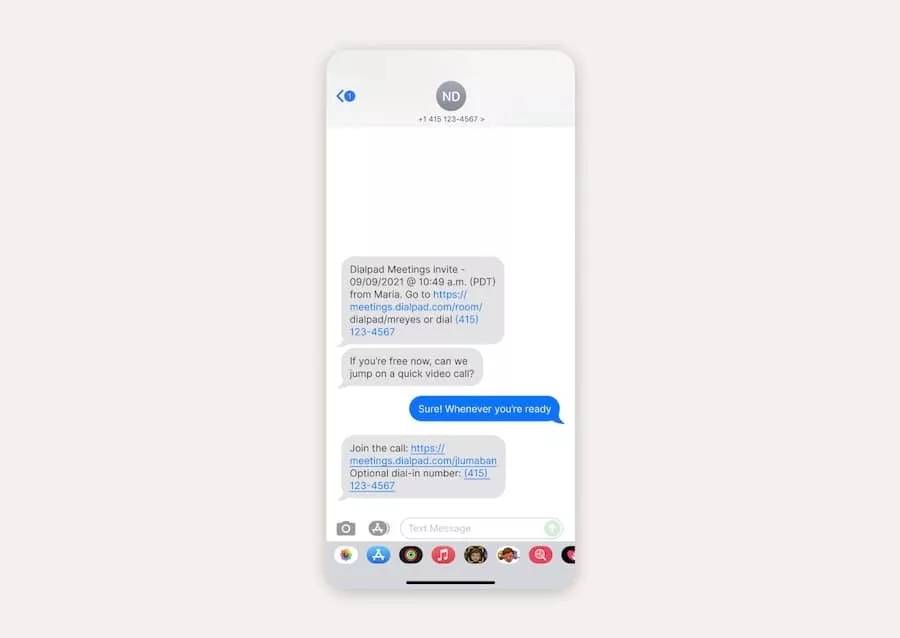
Your website should make it as easy as possible for visitors to stay engaged. If your signup process is unnecessarily long or complicated, most users won’t go through the trouble of subscribing. Every visitor should immediately see how to sign up for your list, regardless of the page they’re looking at.
Some email list sign-up best practices to remember:
Streamline the ask: Make sure your CTA (call-to-action) is interesting and super clear
Promise something: And make sure you deliver on that sign-up incentive
Pare down the number of fields: You want it to be low-commitment. Don’t try to gather every last piece of contact information—it’s not the right time.
Get the opt-in: Make sure you have a checkmark box for your contact opt-in. You only want to contact those who want to hear from you (Many CRMs and email marketing services will offer this option by default).
Signup forms, dedicated landing pages, and even gamified lead gen content can help you attract more great leads. For example, you might give visitors the chance to spin a wheel and see what reward they’ll earn for signing up.
4. Run a contest or giveaway
Contests and giveaways have been lucrative marketing tools since before the days of digital marketing, and they’re not going away anytime soon. In fact, social media helps contests and giveaways reach even more people. It’s especially effective for word-of-mouth marketing, which comes at no cost to the business.
While companies are sometimes hesitant to give away a prize “for free”, the truth is that contest prizes are usually a small price to pay for the engagement they create. You can encourage referrals by offering your followers additional entries in exchange for sharing content with other users.
With a dedicated giveaway platform, you’ll be able to set up new contests using a pre-set framework that does most of the work for you without having to worry about the logistics.
If you’ve previously been reluctant to invest in giveaways and contests, there has never been a better time to get started with these campaigns. Once you do, your sales team can then work to convert these leads into customers.
5. Leverage lead magnets
Most people are already signed up for more email newsletters than they can read, which makes it difficult to get leads to subscribe to new email lists. You need to provide truly unique value in order to attract qualified leads to your subscription and stay engaged with them.
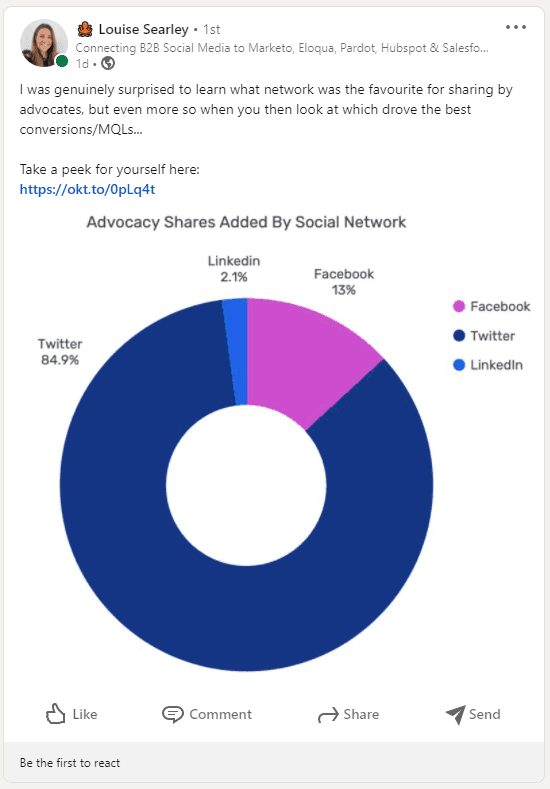
Lead magnets are one of the best ways to bring more new leads to a business. A lead magnet could be virtually anything that users receive in exchange for providing their contact information. For example, you might give website visitors an exclusive discount or free PDF when they provide their email and phone number.
Some typical lead magnets include:
Webinars
Downloadable templates
Quizzes
Snackable gated content
White papers
E-books
Benchmark reports
The most important aspect of a strong lead magnet is that it appeals to your specific audience. If your brand is all about hiking, for example, leads might be interested in a private Facebook group that connects them to other enthusiasts who can recommend new hikes and gear.
In your emails, try giving subscribers the chance to access something truly unique. By providing valuable content that appeals to your target audience you’ll add new leads to your outreach list. And, by including direct references to your product, generate interest that will have potential clients contacting your sales team for more information.
6. Network
Another way to generate leads is some good old-fashioned networking. By attending conferences and other networking events, your sales team can introduce your product to prospective clients. They can use marketing material with your logo design to enhance brand recognition and leave a lasting impression. They can also begin the process of channeling leads into your sales funnel.
Whether the event is virtual or in-person always make a point of asking for contact details so you can follow up later. If your team typically reaches out via voice or video call, you can use Dialpad and receive a call summary afterwards without having to manually take notes.
You can make a digital business card to streamline this exchange and stand out with a modern, professional approach. Then, after each conversation, you can analyze them and create coaching playlists in Dialpad to enhance your team’s performance. This way your team will learn what works and what doesn’t when approaching leads.
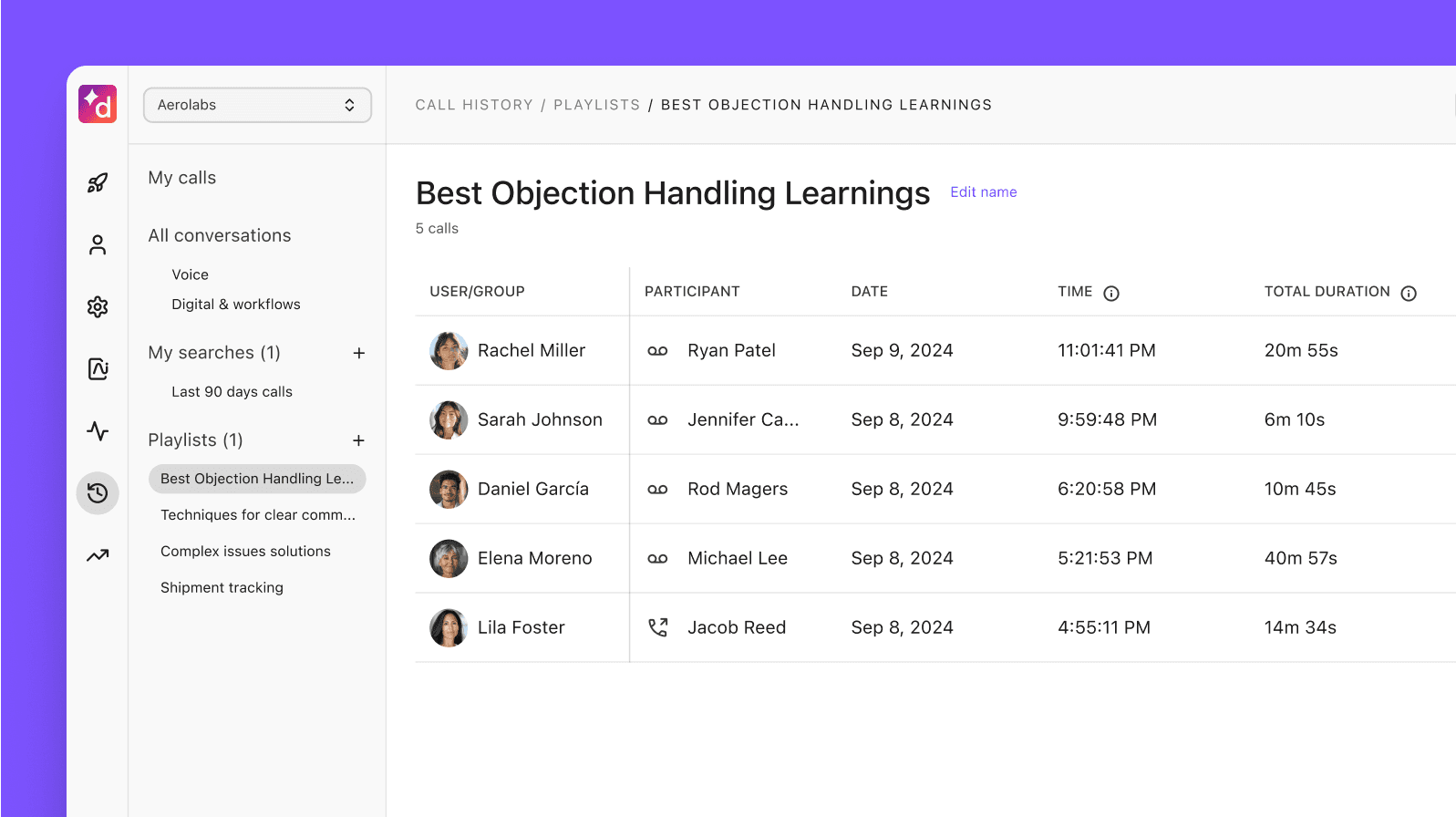
But remember you don’t always have to attend large events in order to network and generate leads. Participate in forums and other online groups as a way to connect with your audience. This is another way to establish your business as an authority in your industry and to provide valuable insights to potential clients.
7. Offer referral rewards
Existing customers are one of your most valuable resources when it comes to lead generation, so make sure to take advantage of their interest. Referral programs give audiences an incentive to tell their friends and family members about you, providing you with low-effort leads—high-quality ones who have a strong interest in your brand.
What’s great about this is when your sales team reaches out to these potential new clients, they already know their efforts will be met positively.
While referral rewards might sound expensive, the truth is that you can offer a great incentive while still spending less than you would pay for conventional marketing campaigns. Referrers are doing some of the work for you, so it’s worth giving them a little kickback in exchange for new customers.
Running referral programs on your own could be extremely complicated. With the right referral software, you’ll be able to fully customize your referral workflow and analyze past results to understand what potential customers are interested in. Since they require very little work after the initial setup, they’re an easy way to increase lead generation without much of an ongoing time commitment.
8. Work with influencers
Influencers are a great way to reach out to new audiences that might not have otherwise connected with your brand. One key advantage of influencer marketing over other campaigns is that influencers usually charge for a desired result.
If you want to generate leads for your local business, for example in New York, you might be able to pay a set rate to NYC influencer agencies for every lead who successfully visits your website, joins your email list, or meets another condition.
If you’re interested in influencer marketing, the most important thing is to find an influencer who’s a good fit for your brand using one of the many influencer management platforms that can help you create impactful campaigns that’ll boost your ROI.
First starts with scale—if you’re a fledgling startup, you probably aren’t going to work with a world-famous influencer. On the other hand, major corporations aren’t going to spend much time looking at micro-influencers who might only have a few thousand followers.
You also need to consider whether an influencer shares an audience, style, or niche, and get a feel for who the influencer is on a personal level. Are they someone you would want representing your brand? Do they share a common mission or values? Even if influencers aren’t your employees, their content and behavior will still reflect on your brand image.
9. Focus on content development
Content marketing is still one of the best ways to bring more leads organically to your site. If you can rank highly for popular keywords that relate to your business, you shouldn’t have any trouble generating new leads.
Even in a hyper-competitive SEO environment, you should still be making the effort to improve your search engine rankings. Content only ranks when it has incoming links to it. An alternative approach to consider is outsource link building to enhance the visibility of your content.
To attract more readers, you need to first identify the topics audiences are interested in, then find ways to provide the most valuable information on those subjects.
Competitor research is a good place to start. Don’t be afraid to use some of their ideas in your own content as long as you make the effort to differentiate your work from theirs.
If you sell outdoor sports equipment, for example, you’ll find that many of your competitors have already written guides to bike helmets and other gear. It’s a good idea to start bringing in some of that traffic yourself, but you need to provide new insights that make your content unique from other articles on the same subject.
But things don't stop once you start getting some traffic. You need to schedule regular content updates to keep your articles timely, accurate, and competitive in search.
Keep in mind that content development can refer to more than just text content like blog posts and news articles. Companies are experimenting with many new forms of content in order to match the evolving preferences of their audiences.
Ironically, you don't need to create entirely new content to impress and engage your followers. Refreshing older content is a highly effective strategy once you have a collection of articles that have aged.
Some brands may find that webinars and other types of audio content give them a better opportunity to cover the topics they’re interested in. Creating a webinar is a much greater investment than conventional text content, but it could pay off if you’re able to establish yourself as a thought leader in your field.
10. Develop testimonials and case studies
Consumers tend to trust family members, friends, and real customers more than they trust promotional materials from companies themselves. Your business should be taking advantage of that dynamic by leveraging testimonials, case studies, and other kinds of user-generated content.
A typical testimonial video might last two or three minutes. You can easily hop on a video conference with the customer to do this.
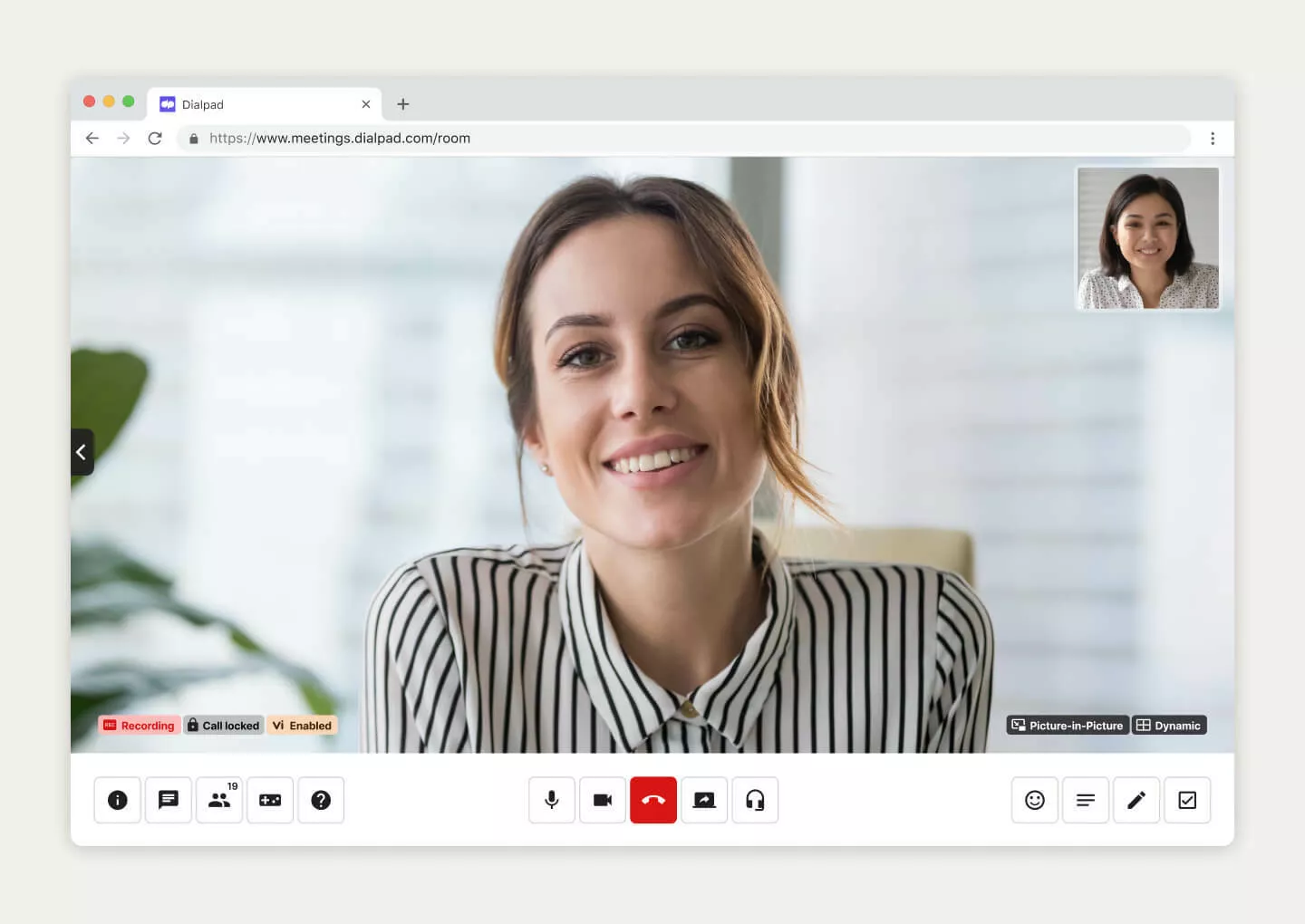
Make sure you give the client enough time to provide some details about their experience, while also keeping the video brief enough to avoid losing the viewer’s interest. Dialpad’s voice transcription is incredibly useful here as it lets you concentrate on getting the content you need.
Case studies are a similar yet distinct type of content that focuses more on a particular project or collaboration rather than the client’s personal experience. They can be effective in video format, but they also often work well as a combination of text, images, and other visual content.
That said, you don’t need to craft testimonials or case studies to leverage positive experiences. Simply publishing user-generated content from your audience is often enough to build your brand credibility through social proof.
For example, you could offer customers a gift when they share your brand with their social networks. If you keep an eye on their activity, you’ll be able to find posts that are worth sharing on your own accounts. You can include user-generated content on your website as well as on social media platforms, in your email newsletter, and across other channels.
Final thoughts
Successful sales rely on two basic elements. First, you need to get leads engaged with your brand. After that, you need to follow up and motivate them to make a purchase, start a subscription, or take another desired action.
With that in mind, you need to generate leads before you can start to think about converting them into customers. While converting existing leads is obviously important, too many businesses focus on this aspect while neglecting lead generation.
Effective lead generation is all about bringing in a consistent stream of new leads that are highly interested in your brand. These tips will help you optimize your current lead generation practices and start bringing in more prospective customers. Remember that every new lead gives you another chance to make a sale.
Generate and engage leads with Dialpad
After generating leads, the next step is to engage and convert them. Find out how Dialpad can help you improve how you communicate with leads.
